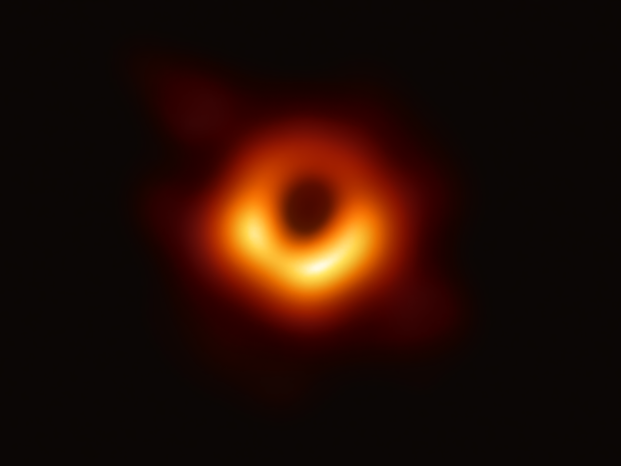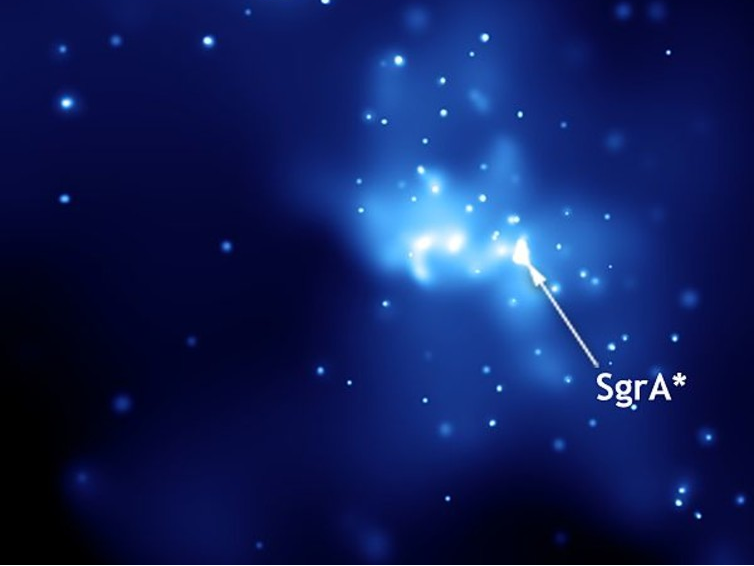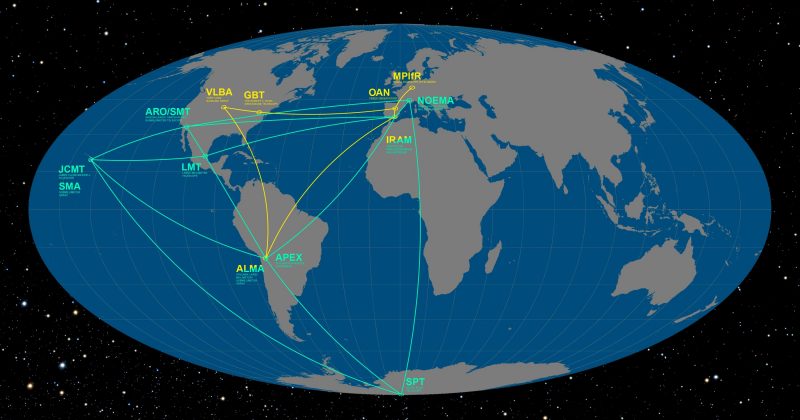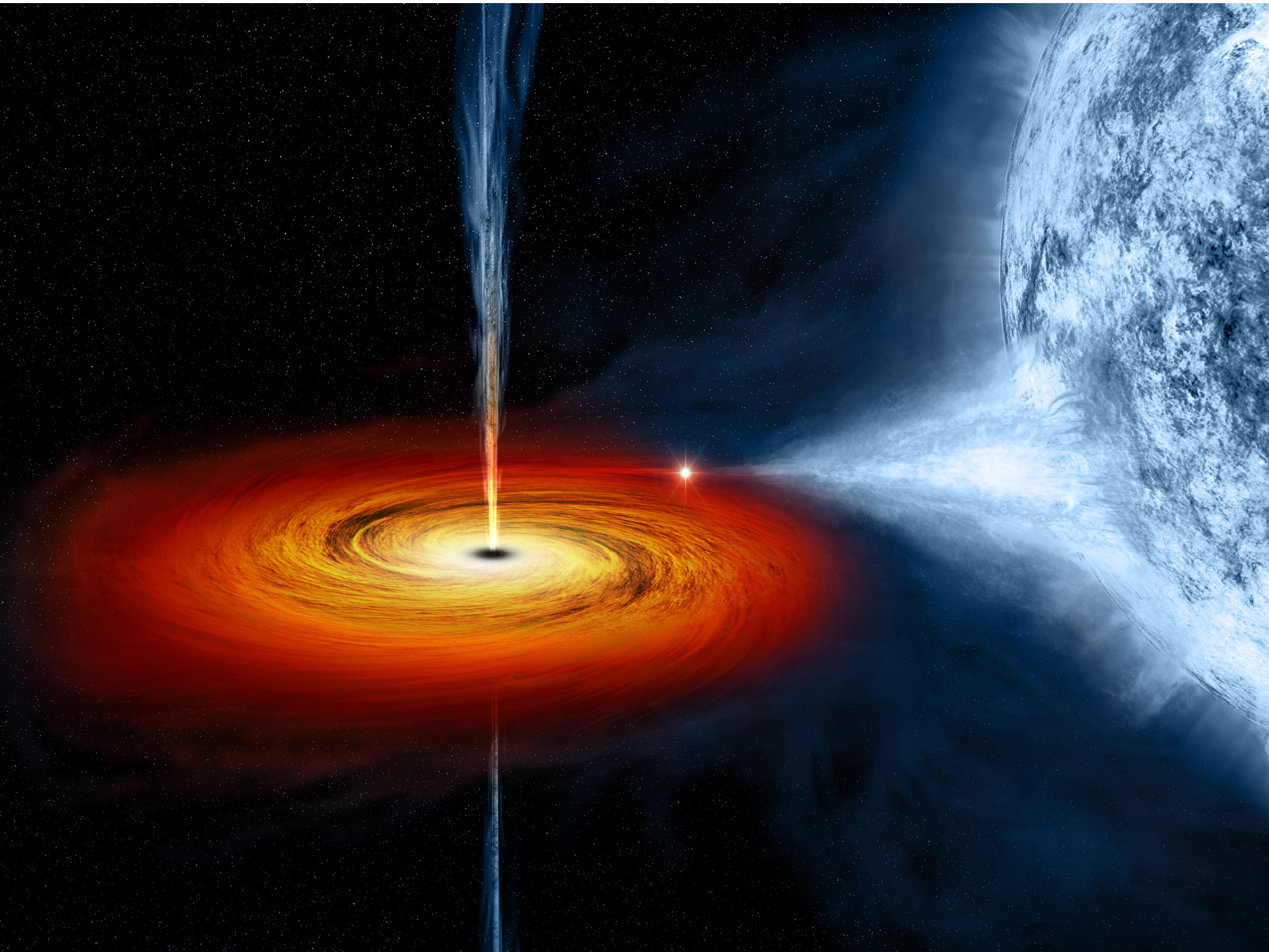- The team of scientists that captured the first-ever photo of a black hole is turning to its next project: video.
- The Event Horizon Telescope team plans to produce hours of real-time video footage of the supermassive black hole at the center of the Milky Way galaxy, along with time-lapse videos of the bigger, more distant black hole they photographed in April.
- The footage could show how the black holes devour stars and interact with their environments.
- Visit Business Insider’s homepage for more.
In April, an international team of scientists captured the first-ever photo of a black hole. In September, they won a $3 million Breakthrough Prize prize for that accomplishment. But they’re far from finished.
Next, the team behind the Event Horizon Telescope (EHT) is planning a cinematic debut. The subject: the supermassive black hole at the center of our own galaxy.
The new project, called next-generation EHT (ngEHT), aims to capture real-time videos of the Milky Way’s black hole to observe its behavior and see how it changes its environment.
“We can see the black hole evolve in real time,” Shep Doeleman, an astronomer who leads the global EHT team, told Business Insider. “Then we can understand how it launches these jets that come from its north and south poles. We can see how it evolves with the galaxy. We can even test Einstein’s gravity in completely different ways, by looking at the orbits of matter – not light, but matter – around the black hole.”
Videos can capture how black holes devour large objects

The black hole in the groundbreaking photo published in April is known as M87. In the image (right), the yellow-red ring is the accretion disk - a rotating mass of super-hot gas and dust from dead stars, planets, and other objects. In M87's case, that disk is larger than our entire solar system.
The darkness within the disk is the event horizon - the point beyond which the black hole's gravitational force is so strong that not even light can travel fast enough to escape. (That absence of light, of course, makes photographing or filming a black hole extremely difficult.)
"It tells us so much," Doeleman said of the photo. "It tells us that there are near-light-speed motions of the gas around the black hole. It tells us how the black hole is oriented in space. It confirms Einstein's theories of gravity very close to the black hole boundary. Once you get a tool like this that gives you access to the inner workings of the cosmos, then you immediately just want to do more."

That's why the ngEHT team is turning their global network of telescopes back to M87, as well as to the black hole at the center of our own galaxy.
The Event Horizon Telescope is made up of observatories around the world. Working together, they can function as a single "virtual" telescope the size of Earth. The group is working to add more telescopes to that network and leverage new computer technology to process 10 times more data from those telescopes. In doing so, they think they can capture video of the two black holes in about five years.
Doeleman hopes that eventually, the videos can reveal what a still image cannot: how those black holes devour matter.
Currently, scientists can tell when distant black holes have eaten something big (like a star) because the events emit intense light that eventually reaches telescopes on Earth. Doeleman thinks videos could capture such events as they happen in real time.
"Imagine you could see the black hole during one of those periods of activity. You'd see exactly where that emission was coming from," he said. "Understanding how these things happen - it tells us everything about the black hole dynamics and how they feed."
Our galaxy's black hole is the perfect movie star

M87 - the black hole the EHT team photographed - has a mass equivalent to about 6.5 billion suns. The black hole at the center of our galaxy, Sagittarius A* (pronounced "A-star") or Sgr A*, is much less massive; it's roughly equivalent to 4 million suns.
That means Sgr A* pulls in less matter, which gives it a much smaller accretion disk than M87's. Because of that, matter circles the black hole far more quickly, completing orbits in a few hours, as opposed to weeks in the case of M87.
"So the M87 black hole, you might look at it from one week to the next and not see too much difference," Doeleman said.
Because of that, the plan to film M87 involves time-lapse video captured over the course of several months. That should be enough time for matter to orbit several times around the black hole.
On the other hand, the EHT team hopes to get real-time footage of Sgr A*, since it changes more quickly and visibly as things move around it.
"[Sgr A*] is very active, and during the course of one night of observing, you may see eight or nine orbits of material around that black hole," Doeleman said.
He hopes to eventually make hours of footage of our galaxy's roiling black hole available to the public.
Expanding the global telescope network to make better videos

Eight telescopes around the world combined to create the first photo of a black hole.
The ngEHT team plans to expand that network to include 11 telescopes in 2020, Doeleman said. Then in four years, they plan to draft a proposal to build new dishes to incorporate as well. They don't need new dishes to film the black holes, but expanding the network would improve video quality.
"It's very likely that we may be able to start making rudimentary movies over the next five years or so. They might be jerky. They might be low-resolution, but they would be the first steps," Doeleman said.
He added: "When we have 20 dishes, that's going to be such a big leap. That will give us the high-fidelity movies that we want to make."
Space-based telescopes in the planet's orbit will eventually lend their vision, too, making the collective telescope even larger than Earth.
Doeleman compared this process to the evolution of Hollywood movies. Even the most low-quality films seemed amazing at first, but movie technology keeps advancing.
"A number of early-career young scientists have now cut their teeth on this first image," he said. "We're developing a new field and it's going to grow and just get better over the years."

